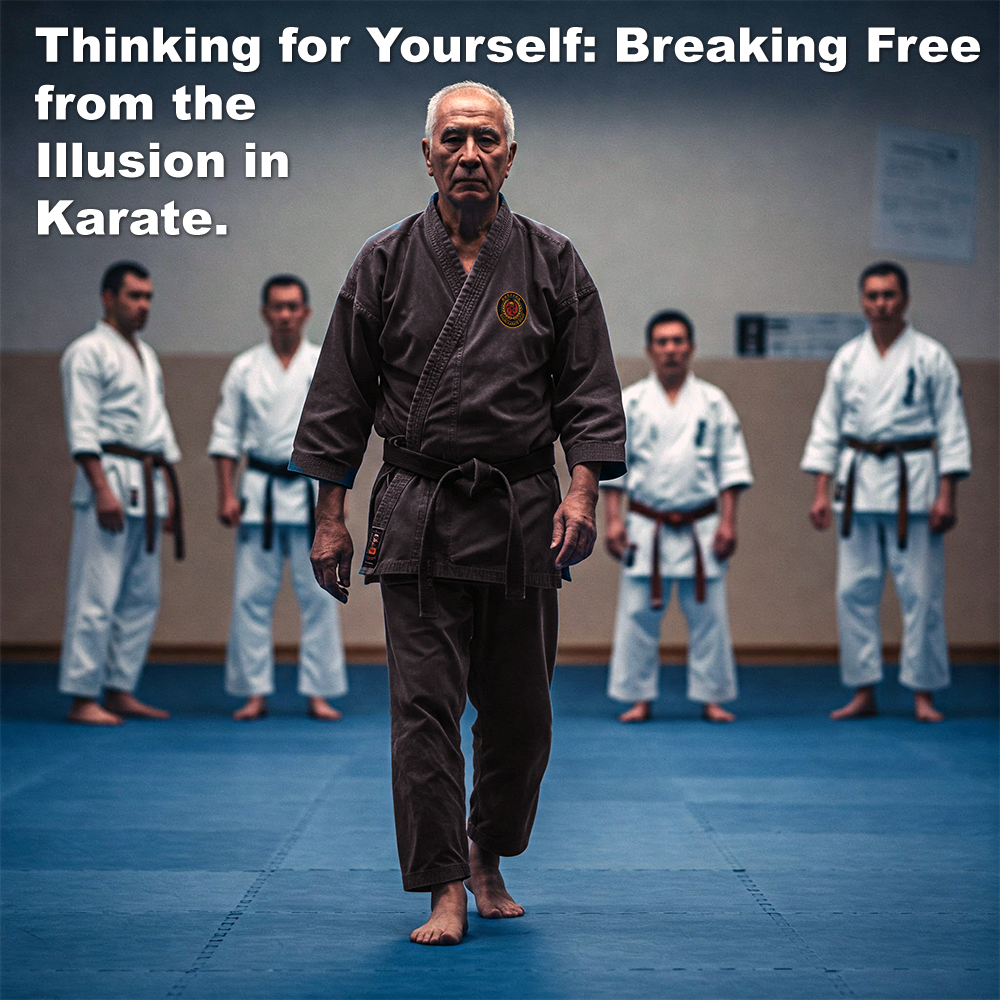
(Approx 2 minute 40 second read)
“What the herd hates most is the one who thinks differently; it is not so much the opinion itself, but the audacity of wanting to think for themselves, something that they do not know how to do.” – Arthur Schopenhauer (1788-1860)
.
Karate, and the martial arts in general, originated as a method of self-protection. They are filled with traditions, rituals, and deeply ingrained beliefs. Many practitioners dedicate years – sometimes entire lifetimes – to training within systems they never question. They assume that because something has been passed down for generations, it must be effective for the context in which it was created.
.
But what if it isn’t? What if much of what is being practiced is disconnected from real-world combat, and the only reason it continues is because people are too afraid to challenge it?
.
There’s a certain comfort in following what has always been done. Training in a structured way, memorizing kata, and performing prearranged step-kumite drills provide a sense of order and capability.
.
But there’s a danger in mistaking repetition for effectiveness. Many karateka convince themselves that what they are practicing is realistic self-defense, yet they have never tested their techniques under real pressure. Instead of questioning what they are learning, they continue training within the same format, unable – or unwilling – to see its flaws.
.
The moment those that do ‘think outside the box’ begin to challenge the status quo, they often face resistance. Not because they are wrong, but because questioning deeply held beliefs forces others to confront their own uncertainties. It is not the new idea that is hated, but the mere fact that someone dared to think for themselves.
.
If karate truly is for self-protection, then its purpose is to prepare people for real violence. Yet much of what is taught in dojos today just doesn’t hold up under pressure.
.
The reliance on compliant drills, unrealistic sparring, and techniques that assume a cooperative opponent, all contribute to an illusion of effectiveness.
.
The problem is that many practitioners don’t want to admit this. They prefer to believe that their training is enough, because their sensei told them it works, it must be true.
.
To challenge these beliefs means admitting they might have wasted years practicing something that won’t hold up in the real world. And that is a bitter pill to swallow.
.
When people have had to confront real life assailants who do not respond like they do in the dojo, it revealed weaknesses in their training.
.
And that truth remains – if a technique cannot be applied under real pressure, it’s nothing more than a theory. If your training does not prepare you for resistance, aggression, and unpredictability, then you are merely practicing choreography, not self-defense.
.
Many instructors cite that they have to show a demonstration without resistance so students can learn it. Well yes, of course. But as an instructor, you can show it at full speed and with a resisting opponent too, can’t you?
.
The greatest challenge in martial arts is not learning a technique, but unlearning what does not work. Thinking for yourself in karate means questioning what you have been taught, and being willing to abandon what proves ineffective in the context you are training for.
.
If your interest in karate lies in its value as a method of self-protection then it means embracing practicality over tradition and effectiveness over blind loyalty.
.
Schopenhauer’s words I believe ring true in the martial arts – people do not hate different opinions as much as they despise independent thought. If you dare to think for yourself, expect resistance. But if karate is truly about self-protection, then the greatest lesson you can learn is this: blind faith in tradition is not the path to proficiency – critical thinking is.
.
.
Written by Adam Carter
